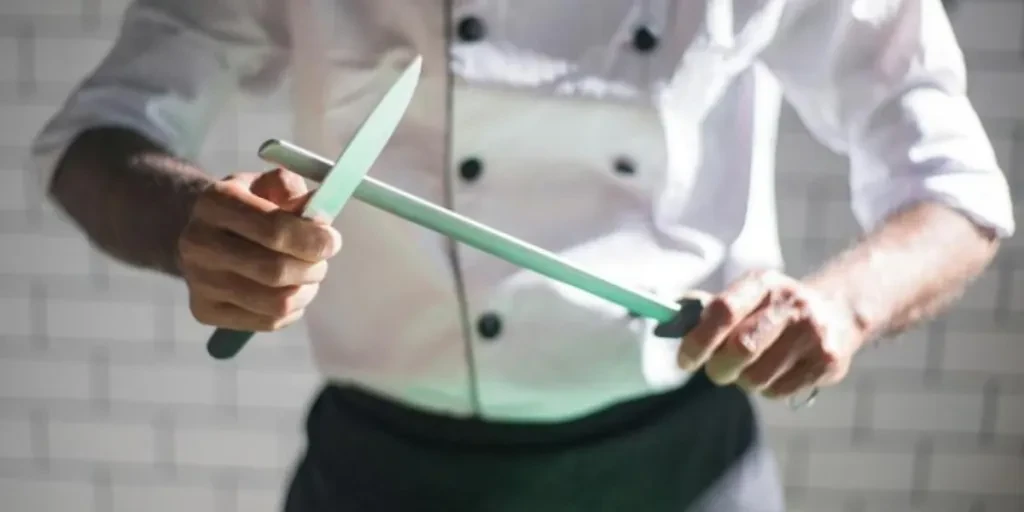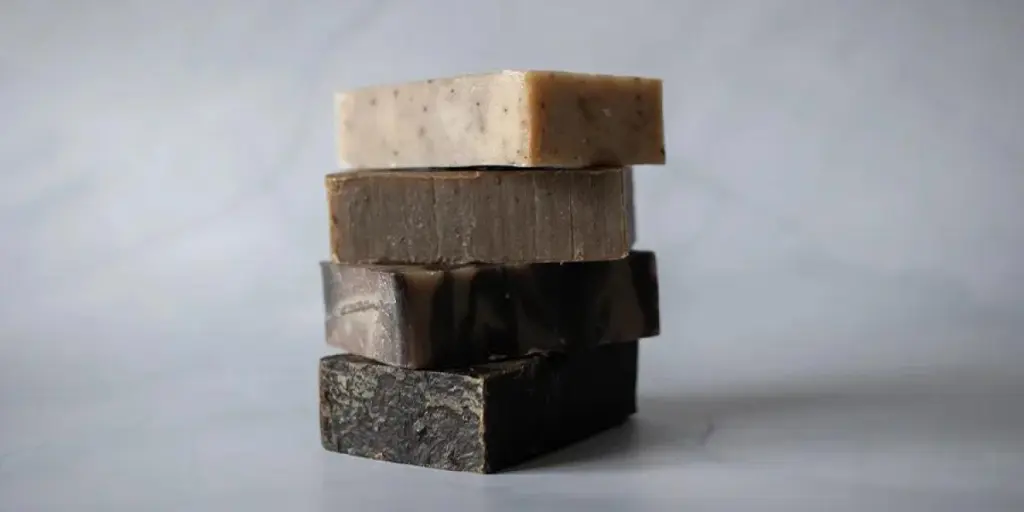A knife sharpener is used to sharpen the blades of a knife into a razor-sharp edge. There are different sharpener types that are popular in the market. Read on to discover how to stock the best knife sharpeners for your buyers in 2025.
Table of Contents
Why knife sharpeners have business potential
The different types of knife sharpeners
1. Sharpening stones
2. Sharpening steels
3. Manual knife sharpeners
4. Electric knife sharpeners
What to look for when selecting knife sharpeners
1. Sharpening angle
2. Grit rating
3. Ease of use
Summary
Why knife sharpeners have business potential
Globally, the knife sharpener market was valued at USD 830.0 million in 2024, and is expected to expand to USD 1.13 billion by 2033, at a compound annual growth rate (CAGR) of 3.4% within the forecast period.
Knife sharpeners are commonly used in the home to sharpen kitchen knives for food preparation. As a result, the residential segment of the market is anticipated to maintain the greatest market share during the forecast period. However, the rising popularity of outdoor activities like camping and hunting where sharp knives are a useful tool is contributing to the demand for knife sharpeners.
The electric segment of the market is also predicted to hold significant market share. Although electric models are sold in a higher price range, the convenience and simplicity of an electric knife sharpener makes them popular among customers.
The different types of knife sharpeners
1. Sharpening stones
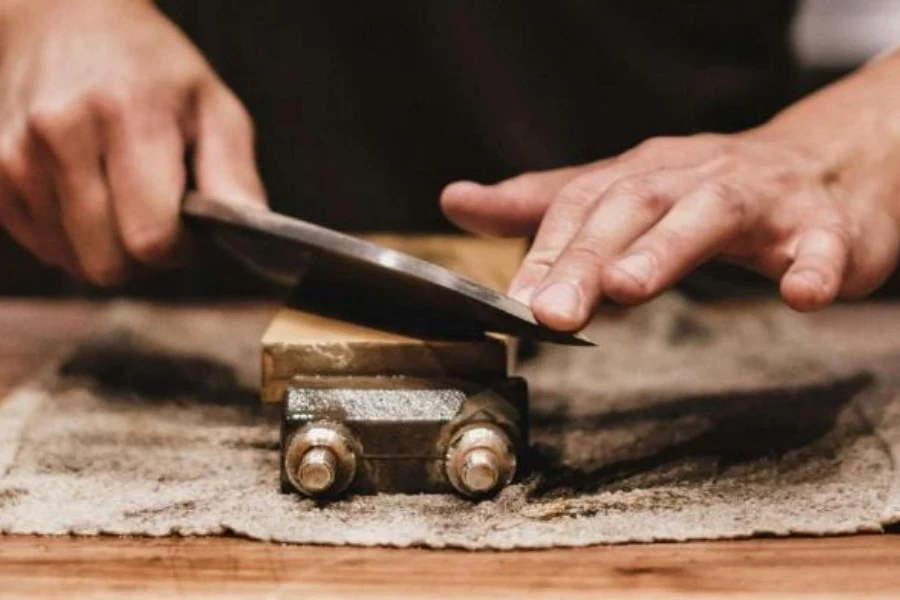
A sharpening stone, also known as a whetstone, is a rectangular, abrasive surface used to sharpen the blade of a knife by swiping the edge across the flat surface. Knife sharpening stones can be made from different abrasive materials, such as natural stone, ceramic, or diamond.
Although a knife sharpening stone offers the most control over sharpening, it requires a certain skill level and is more suited for experts. However, a sharpening stone is versatile enough to be used on a wide range of knives.
2. Sharpening steels
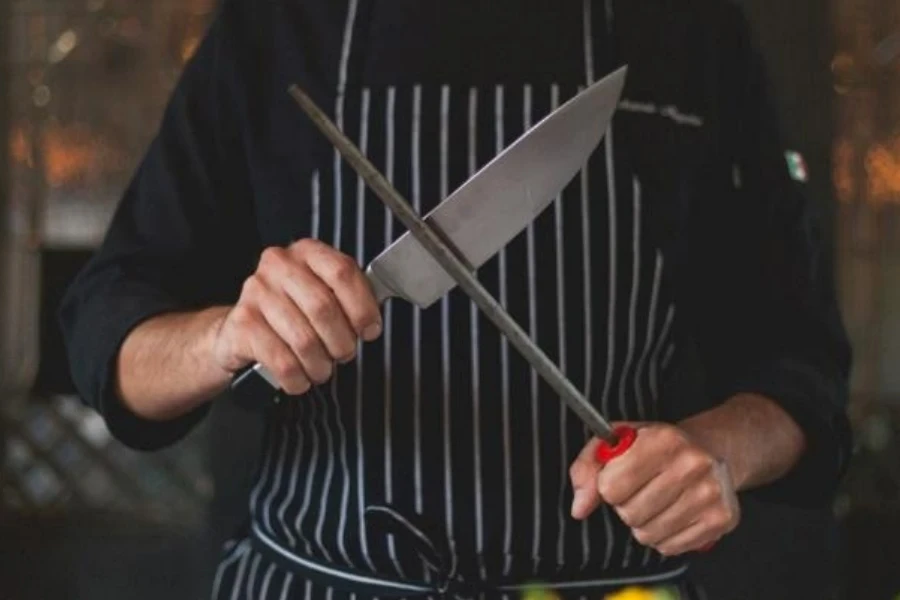
A sharpening steel is a long rod generally made from steel, fine ceramic stone, or diamond. The knife is drawn by hand across the knife sharpening rod to straighten the edge. Sharpening bars are commonly used for maintaining the sharpness of the knife blade or as a quick fix.
Even though a certain level of technique is required when using knife sharpening steels, the technique is easy to learn for the average user. A steel sharpening rod may not be appropriate for all types of knives, as some blades may be more prone to damage with a rod.
3. Manual knife sharpeners

Manual knife sharpeners are hand-operated devices with slots to guide the blade and sharpen the edge at a consistent angle. The knife is manually drawn through abrasive wheels, rods, or stones built into the sharpener.
A manual knife sharpener is more user-friendly than whetstones or honing rods. However, these handheld knife sharpeners take more time to sharpen the knife’s edge and are not capable of repairing substantial chips in the blade. They may also experience quicker wear and tear after years of use.
4. Electric knife sharpeners
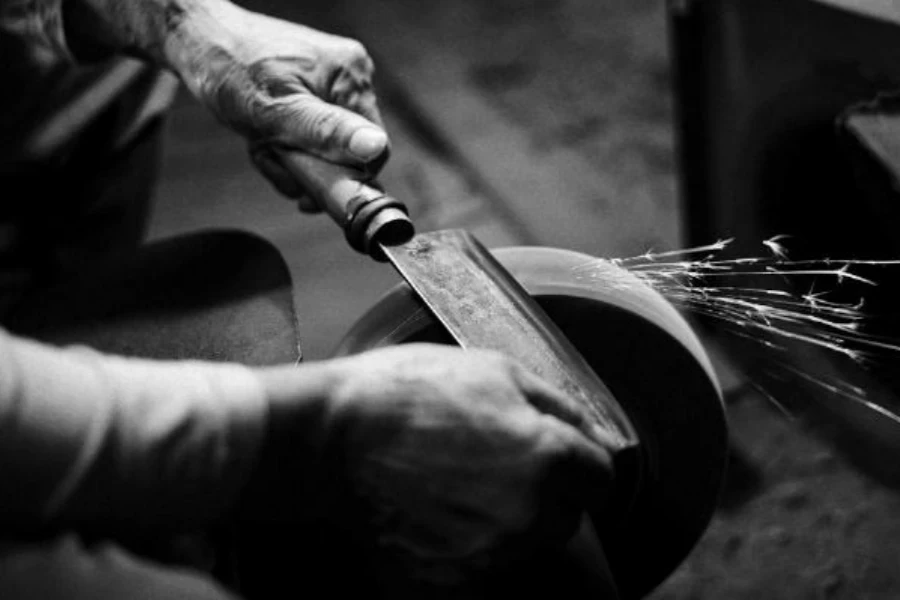
Electric knife sharpeners use motorized wheels or belts to sharpen the knife as it passes through. The blade of the knife is simply placed into a slot or on top of the sharpener and the motorized mechanism will sharpen the blade automatically.
An electric knife sharpener is fast, convenient, and easy to use for beginners. However, a motorized knife sharpener may not be suitable for all types of professional knives. They offer less control over how much metal is removed from the blade, thus potentially shortening the lifespan of the blade.
What to look for when selecting knife sharpeners
1. Sharpening angle

Different types of knives have different optimal angles for sharpening. The angle of the knife sharpener is an important consideration to ensure compatibility with the customer’s needs.
An angle of 17 to 20 degrees should cover most large kitchen knives, pocket knives, and outdoor knives. Some good quality Japanese knife sharpeners will have an angle of 15 degrees. As a result, for manual and electrical knife sharpeners, adjustable angles with several increments will make the unit more versatile.
2. Grit rating
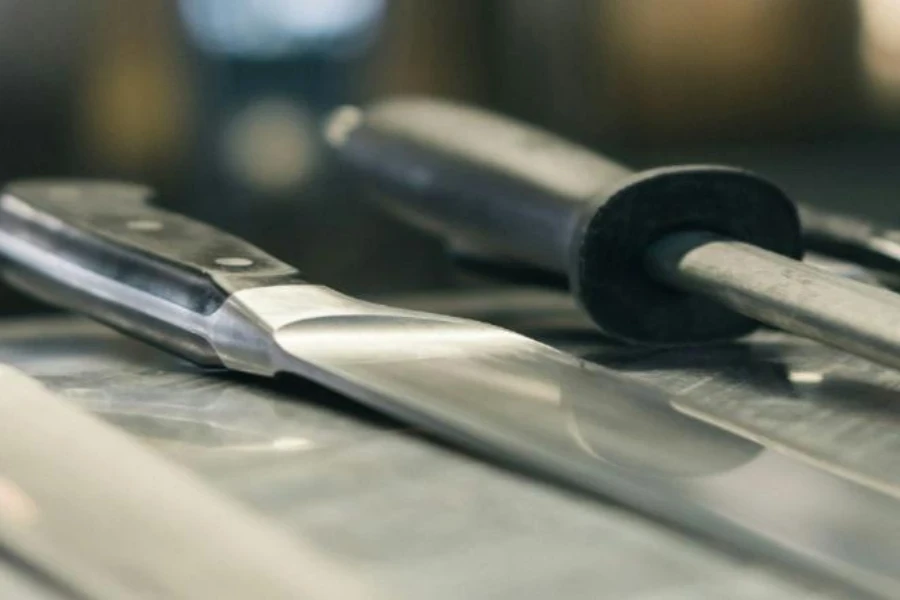
Grit rating is another important consideration when stocking a comprehensive range of knife sharpeners. The grit rating measures the size of the abrasive particles in the sharpener, with the higher the grit rating the smoother the finish that can be achieved.
Coarse knife sharpeners (200-600 grit) are ideal for sharpening damaged blades, while fine knife sharpeners (2000-3000 grit) are used for polishing the sharp edge as a finishing touch. Any grit rating in between is suitable for general maintenance of dull knives. The most popular knife sharpeners will come with multiple grit levels to accommodate different blades.
3. Ease of use
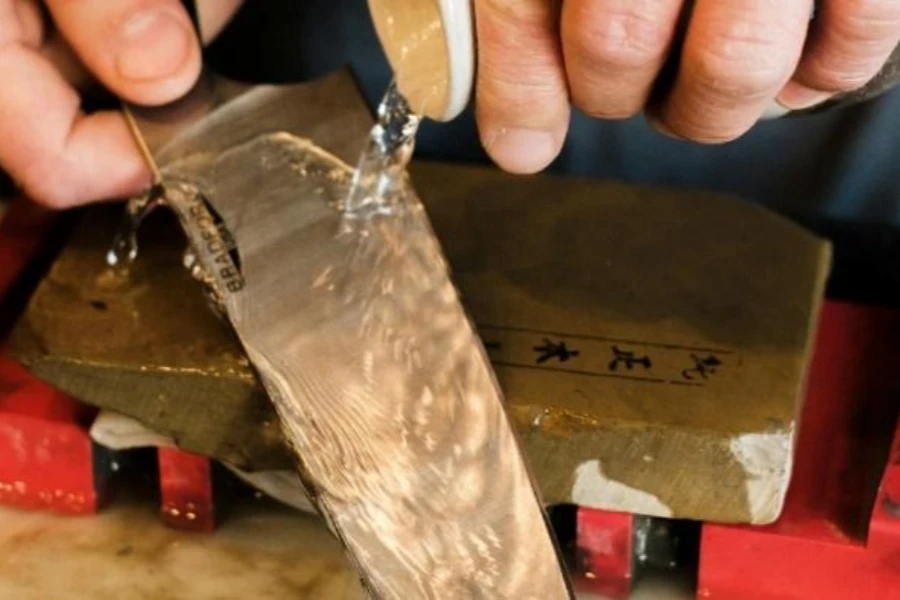
Since knife sharpening tools can be purchased by a variety of customers, ranging from beginner to expert, ease of use should be considered. Beginners are also likely interested in knife sharpeners that are quick and safe, while experts may focus on control and precision.
Electric sharpeners or pull-through sharpeners with preset slots are the ideal option for beginners because they require minimal skill to operate. On the contrary, whetstones and sharpening steels are suitable for commercial or professional-level use due to the more complex sharpening process. For either customer segment, ergonomic designs and comfortable handles will offer added value.
Summary
There are several types of knife sharpeners available in the market, including sharpening stones, sharpening steels, and manual or electric knife sharpeners. Regardless of product type, the key characteristics of knife sharpeners include angle adjustability, grit rating, and ease of use.
An understanding of what to consider when stocking knife sharpeners is important for developing successful product ranges. With this comprehensive guide to knife sharpeners, businesses are advised to consider how they can capitalize on this trend.
